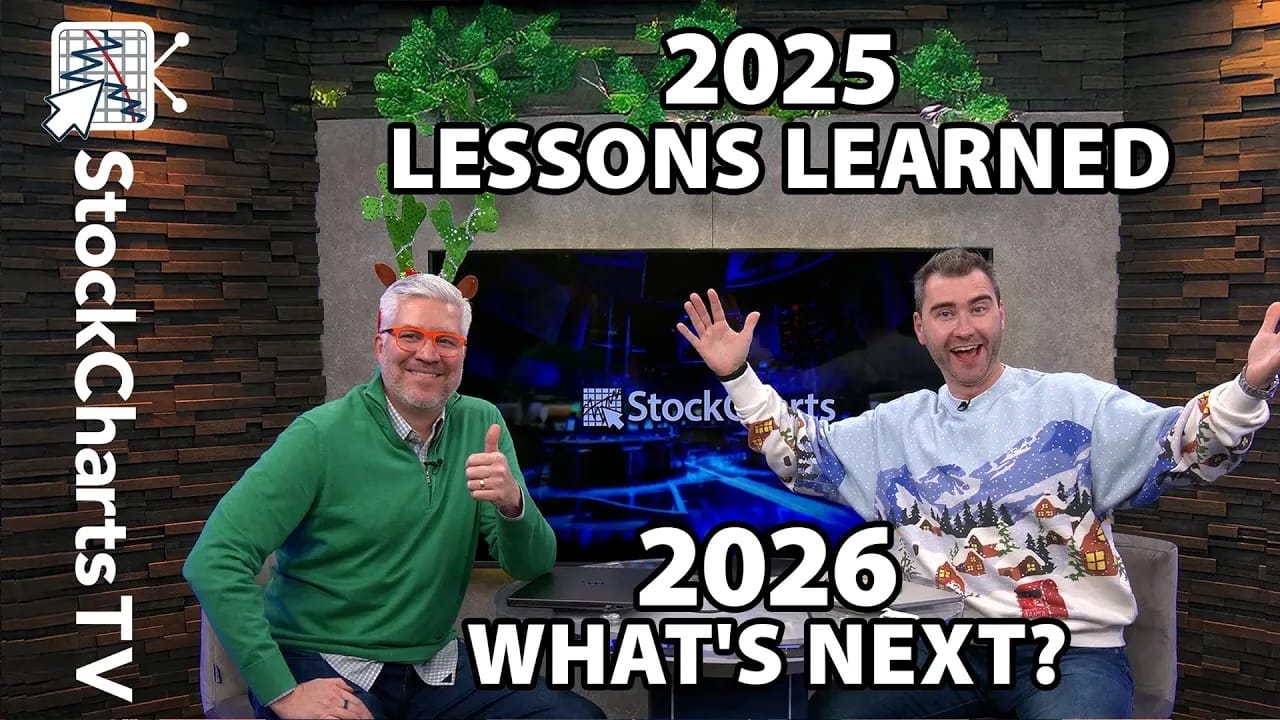NASDAQ RECOVERS -- SEMIS LEAD RECOVERY -- NSM GAPS HIGHER -- TXN BOUNCES OFF SUPPORT - RUSSELL 2000 BATTLES RESISTANCE BREAKOUT -- EMERGING MARKET LEADERS AND LAGGARDS
NASDAQ LEADS REBOUND... Today's Market Message was written by Arthur Hill. John Murphy will be back next week. - Editor
The Nasdaq held support and led the market higher on Friday. Even though Thursday's decline was quite drastic, the Nasdaq never broke support from its May lows and the medium-term uptrend remains. Nasdaq support is just above 2500 and extends back to the January highs. The index established a resistance zone around 2510 and this resistance zone turned into support during May. This is a classis tenet of technical analysis: broken resistance turns into support. While this week's three day plunge was the sharpest decline since late February, the index is still holding support and I would not put on my bear hat until a break below 2500.

Chart 1
SEMIS LEAD THE NASDAQ ... The Semiconductors led techs higher with a 2.89%. Semis also led the Nasdaq higher in April and renewed leadership from this key group would bode well for the Nasdaq. The Semiconductor HOLDRS (SMH) broke resistance in April and broken resistance turned into support around 35.5. The decline over the last four weeks returned to broken resistance for a test. Notice that this decline formed a falling wedge and retraced just over 50% of the Apr-May advance. Both the pattern and the retracement are typical for corrections. Friday's high volume surge reinforces support and I am looking for follow through to break wedge resistance.

Chart 2

Chart 3

Chart 4
RUSSELL 2000 CHALLENGES BREAKOUT... The on-again off-again breakout for the Russell 2000 is being challenged again. The Russell 2000 broke resistance at 835 on 22-May, but got second thoughts and pulled back a few days later. The index again broke resistance with a five day surge above 850 and this breakout looked stronger. Even so, the index came crashing back through 835 and the Russell 2000 is facing yet another failed breakout. This is also known as a bull trap. The breakout suckers the bulls in and the sharp move back below the breakout springs the trap. It is an ugly situation, but all part of the trading and investing.

Chart 5
Despite this battle at 835 resistance, I am not quite ready to throw in the towel. However, the index is perilously close to support and a break below the May lows would be bearish. There are three fan lines on this chart and the index tested the third fan line on Thursday and Friday. As an interesting twist, I was reviewing Technical Analysis of the Financial Markets (by John Murphy) and Murphy provides an example of the Russell 2000 with three fan lines. Instead of a downside break, Murphy's example shows an upside breakout in February 1998 (page 75). Moving back to 2007, the index needs to hold the third fan line and the 50-day moving average to keep the bulls alive.

Chart 6
CHINA AND BRAZIL ARE LEADING... When looking for the leaders and the laggards, the February highs served as one of my benchmarks. In previous messages, I noted how the Finance SPDR (XLF) and Consumer Discretionary SPDR (XLY) never broke above their February highs and were lagging the S&P 500, which broke its February high in mid April. This same logic can be applied when analyzing the four big emerging markets: Brazil, Russia, India and China (BRIC). Of these four, two are leading and two are lagging.
The Chinese Shanghai Composite ($SSEC) was the first to break its February highs in late March and the index surged another 40% after the breakout. The Brazilian Bovespa Composite ($BVSP) was next with a break above its February high in early April and the index tacked on another 15%. The advance in the Shanghai Index is looking a bit parabolic after a 170% move since August and a 65% surge since February. The index declined sharply over the last two weeks and further weakness towards support around 2700-3000 is quite possible. The January-February consolidation and August trendline mark support in this area.

Chart 7
The Bovespa Index is also a bit frothy, but not near as much as Shanghai Index. However, the same technical analysis features apply as the index is overbought and ripe for a pullback. Broken resistance around 45000-46000 turns into support and this is the target for a pullback.

Chart 8
RUSSIA AND INDIA ARE LAGGING... The Russian Trading System Index ($RSTI) and the Indian Bombay Sensex Index ($BSE) are the emerging market laggards. The Russian Index moved above its February high in mid April, but failed to hold this breakout and declined rather sharply in May. The US stock indices remained strong in May and this decline showed relative weakness in Russia. The index found support near the March low and 40-week moving average over the last two weeks. A break below the March low would forge a lower low and reverse the long-term uptrend.

Chart 9
The Bombay Index and the Finance SPDR (XLF) have very similar chart patterns at work. Chart patterns are equal opportunity employers. The Bombay Index and the Finance SPDR both surged in the second half of 2006 and peaked in February 2007. The Feb-Mar declines were sharp, but both worked their way back to the February highs and challenged resistance in May. Challenge is about it because both failed to breakout and lagged behind their counter parts. The Bombay Index failed to break resistance and has been lagging other world markets. A big double top could be forming a break below the March low would confirm this pattern.

Chart 10

Chart 11











